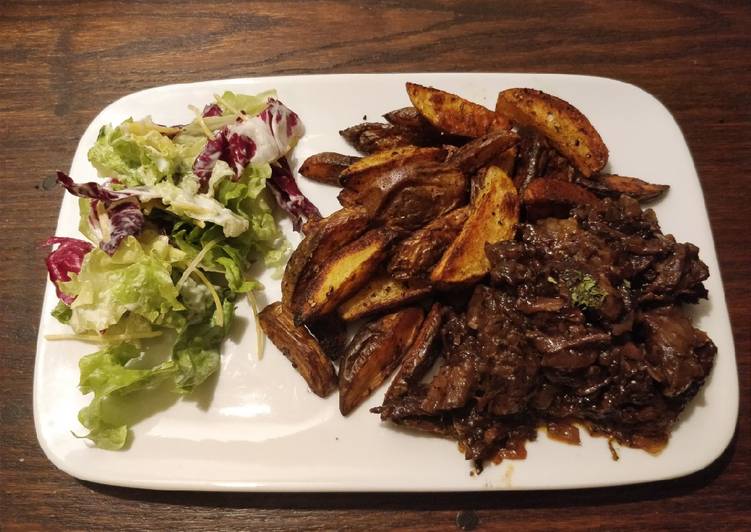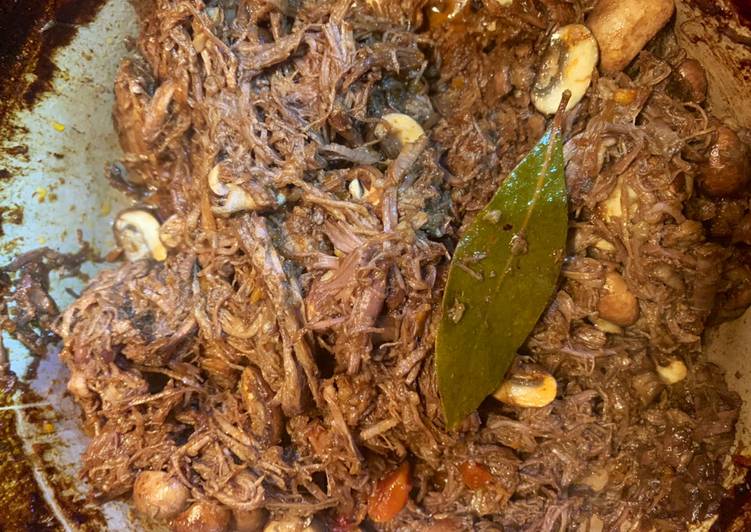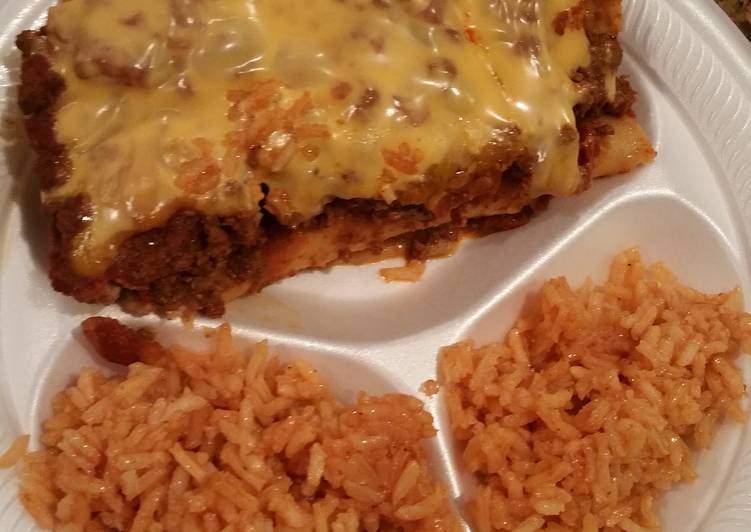
Hello everybody, it’s Louise, welcome to my recipe site. Today, I will show you a way to make a distinctive dish, 'indonesian' beef stew. One of my favorites food recipes. For mine, I will make it a bit tasty. This will be really delicious.
Semur is an Indonesian type of meat stew (mainly beef), that is braised in thick brown gravy commonly found in Indonesian cuisine. The main ingredient used in semur gravy is sweet soy sauce, shallots, onions, garlic, ginger, candlenut, nutmeg and cloves, sometimes pepper, coriander, cumin and cinnamon might be added. Sweet soy sauce is the most important ingredient in the Semur-making process.
'Indonesian' beef stew is one of the most favored of current trending foods on earth. It is simple, it is quick, it tastes yummy. It’s enjoyed by millions daily. They are nice and they look wonderful. 'Indonesian' beef stew is something which I have loved my entire life.
To get started with this particular recipe, we must first prepare a few components. You can have 'indonesian' beef stew using 12 ingredients and 12 steps. Here is how you can achieve that.
The ingredients needed to make 'Indonesian' beef stew:
- Get 2 small onions
- Prepare 1 glove of garlic
- Make ready 2 tbs butter
- Make ready 400 g beef, rib or other stew cuts
- Make ready 100 ml red wine
- Get 100 ml water
- Get 5 tbs ketjap (or soy sauce)
- Take 3 thyme springs (or 1tbs dried thyme)
- Get 2 bayleafs
- Get 4 cloves
- Make ready 2 tbs tomato ketchup
- Get 1 tbs potato starch (or general binding agent)
The Best Indonesian Beef Recipes on Yummly In a bowl, mix together the onion, carrot, garlic, stock, sesame oil, kecap manis, soy sauce, tomato sauce and sweet chilli sauce. Stir frequently as the sauce thickens. Beef rendang is one of the original cuisines of Minangkabau descent and Sumatra's culture.
Steps to make 'Indonesian' beef stew:
- Roughly chop the onions and peel the garlic.
- Season the beef generously on both sides with salt and pepper.
- On medium heat melt some butter and start cooking the onions and the garlic. Use a garlic press, or mince the garlic.
- When the onions are halfway there, make room for the beef. You could do this in stages, but why bother…
- Brown the beef on both sides. Render out as much fat as you can.
- Pour the ketjap over the meat and give it a minute to boil and let it flavor the beef. Don't let it evaporate completely though. Don't worry if it is too much or too little, you can adjust for salt with the final seasoning.
- From the side of the pan, add the wine and the water. It should just cover the meat, depending on the size of the pan.
- Add the spices and the tomato ketchup and stir till combined.
- Cover and let simmer for at least 4 hours. Check every hour or so for liquid, and add water if it appears to become dry. Also turn the beef over to help even cooking. It may fall apart already, that is fine.
- After this time break up the beef into chunks of your desired size. And remove the thyme springs and bayleafs.
- Mix the potato starch with a teaspoon of cold water and mix it up, before stirring it through the stew. Taste and add salt and pepper to taste.
- Serve with fries, potatoes, rice or just plain. And don't forget to eat some vegetables as well.
It is served at special occasions to honor guests and during festive seasons. It is a delicious Indonesian dish prepared with a myriad of herbs and spices cooking for a few hours until all the liquids have been completely absorbed by the meat. Spicy, rich and creamy Malaysian/Indonesian beef stew made with beef, spices and coconut milk. With ketjap as a major component, I think it would classify as Indonesian. Though alternatives like soy sauce would probably also work, and make it less Indonesian.
So that’s going to wrap it up for this special food 'indonesian' beef stew recipe. Thanks so much for reading. I am confident you will make this at home. There is gonna be more interesting food in home recipes coming up. Don’t forget to save this page in your browser, and share it to your family, friends and colleague. Thanks again for reading. Go on get cooking!

